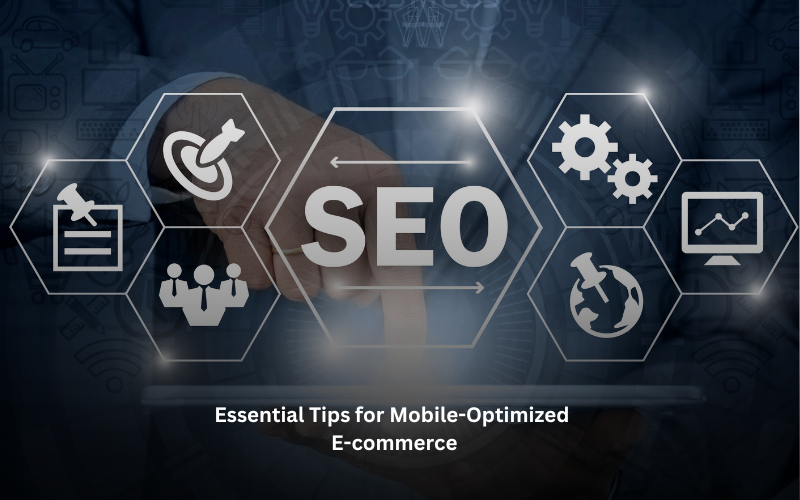In the digital age, the ubiquity of smartphones has transformed consumer behavior, making mobile optimization a critical element of e-commerce success. This comprehensive guide explores the importance of creating a mobile-optimized e-commerce experience, offering actionable insights and leveraging over a decade of industry expertise to help you enhance your mobile strategy.
The Imperative of Mobile Optimization
As mobile devices continue to dominate internet access, e-commerce platforms must adapt to meet the expectations of the modern consumer. A mobile-optimized site is no longer just an advantage; it’s a requirement for survival and growth in the highly competitive digital marketplace.
Why Mobile Optimization Matters
- Increased Traffic: Mobile devices drive a significant portion of online traffic.
- Higher Conversion Rates: Mobile-optimized sites convert more visitors into customers.
- Improved Search Engine Ranking: Search engines favor mobile-friendly websites.
The Foundations of Mobile Optimization
Responsive Design
Responsive design ensures that your e-commerce site adjusts seamlessly to fit the screen size and orientation of any device, providing a consistent user experience across desktops, tablets, and smartphones.
- Flexible Layouts: Use fluid grid layouts that adapt to different screen sizes.
- Scalable Images: Ensure images scale correctly without losing quality.
- Media Queries: Utilize CSS media queries to apply different styles for different devices.
Mobile-Friendly User Interfaces
Creating interfaces that are friendly to mobile users involves more than just aesthetics. It includes understanding and designing for the user’s journey on a smaller screen.
- Simplified Navigation: Design menus and navigation tools that are easy to use on mobile devices.
- Touch-Friendly Elements: Increase the size of buttons and links to make them easy to tap.
- Minimalist Design: Avoid cluttering the mobile interface with excessive elements that can overwhelm users.
Enhancing User Experience on Mobile
Speed Optimization
Mobile users expect fast loading times, and even a few seconds of delay can lead to frustration and abandonment of the shopping cart.
- Optimize Image Sizes: Compress images without sacrificing quality to enhance load times.
- Minimize Code: Streamline HTML, CSS, and JavaScript to speed up page rendering.
- Leverage Browser Caching: Store resources on local devices to reduce loading times on subsequent visits.
Seamless Checkout Process
A smooth, hassle-free checkout process is vital to converting mobile users into paying customers.
- Streamlined Forms: Reduce the number of fields in forms and use autofill where possible.
- Multiple Payment Options: Include various payment methods, including mobile wallets, to cater to user preferences.
- Guest Checkout Option: Allow users to make purchases without creating an account.
Leveraging Advanced Mobile Technologies
Progressive Web Apps (PWAs)
PWAs provide an app-like experience on the browser, offering capabilities such as offline access, push notifications, and background syncing.
- Engagement Features: Implement push notifications to enhance user engagement.
- Offline Capabilities: Allow users to browse products and load previously visited pages without an internet connection.
Augmented Reality (AR)
AR can bridge the gap between online shopping and the tactile experience of a physical store by allowing users to visualize products in their own space.
- Virtual Try-On: Enable features like virtual try-on for accessories or makeup.
- 3D Product Visualization: Allow customers to view products in 3D to better understand their features.
Mastering Mobile to Drive E-commerce Growth
Optimizing your e-commerce site for mobile is not just about adapting to trends—it’s about actively shaping the customer experience to meet and exceed the evolving expectations of your users. By focusing on responsive design, user-friendly interfaces, and advanced mobile technologies, you can ensure that your e-commerce platform not only survives but thrives in the mobile-first era.
Actionable Tips:
- Regularly test your mobile site’s performance across different devices and browsers.
- Gather and analyze user feedback specifically about the mobile experience to continuously refine your approach.
- Stay updated with the latest mobile technologies and trends to keep your e-commerce site at the cutting edge.

